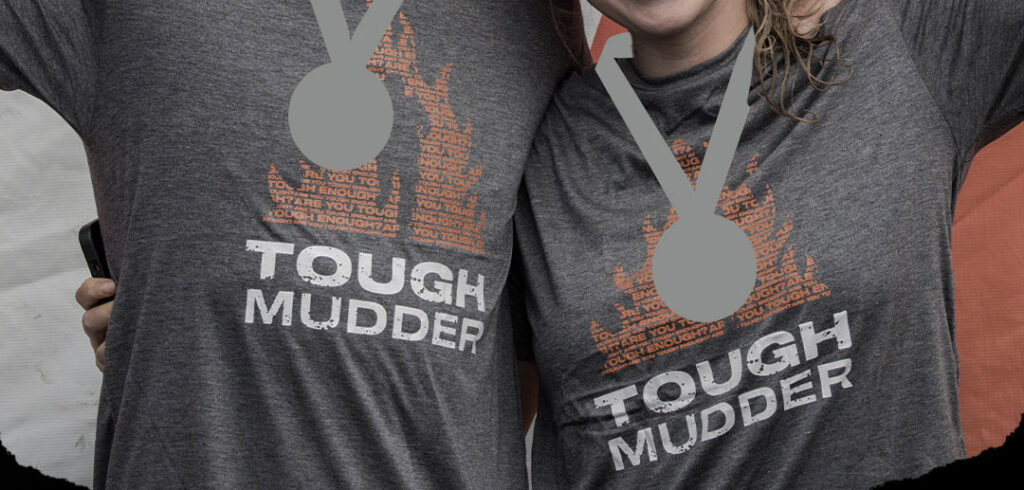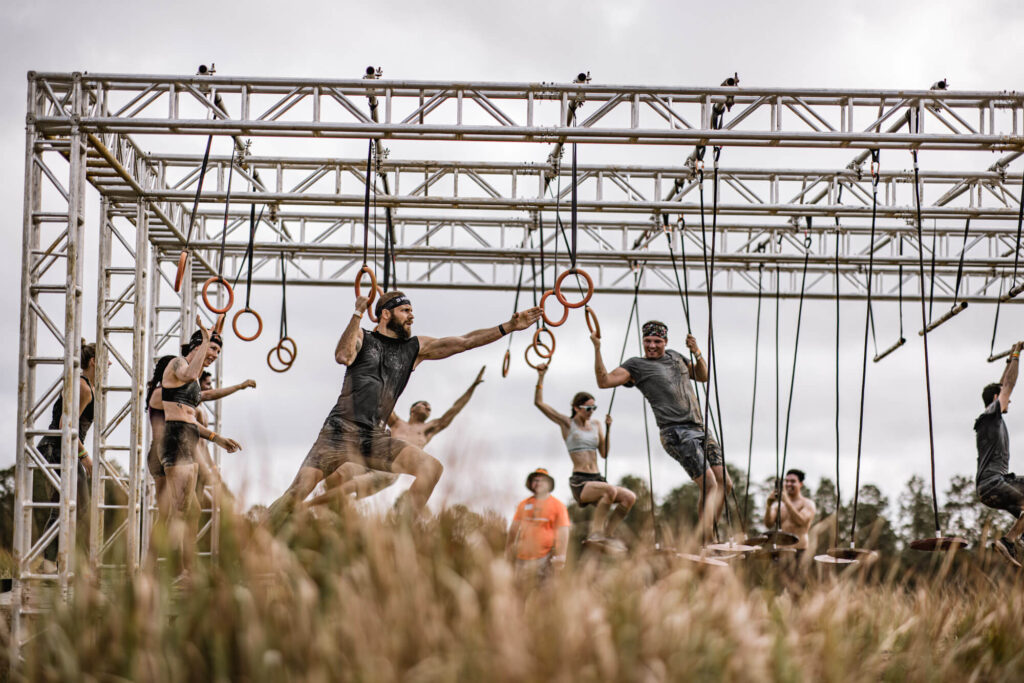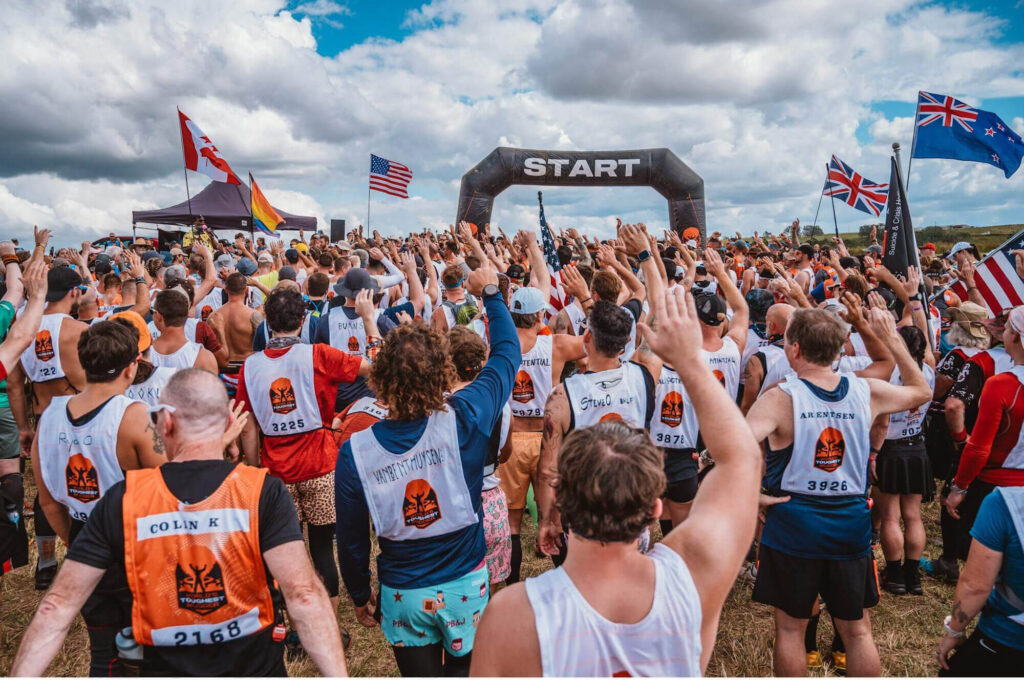Where It All Began
I first heard about Toughest Mudder during my very first Tough Mudder event. I was running at a steady pace when I met Joe King. We ended up tackling most of the course together, and as we conquered obstacle after obstacle, he told me about the longer endurance events. That’s when the idea was planted.
Fast forward a bit, and I had the chance to crew for Johnny Mares at World’s Toughest Mudder 2023. Watching him push through hours of pain, cold, and exhaustion with resilience and grit was incredibly inspiring. I remember thinking: What would happen if I tried to go even half as long?
At that point, I had completed two Tough Mudder 15Ks. My first was with Joe, but during the second, I ran solo — out front, taking on most of the obstacles alone, and ended up finishing first. To top it off, my sponsor, Myles Teteak (founder of Life Leaf Remedies), surprised me at the finish line. That moment stayed with me.
Training for Toughest
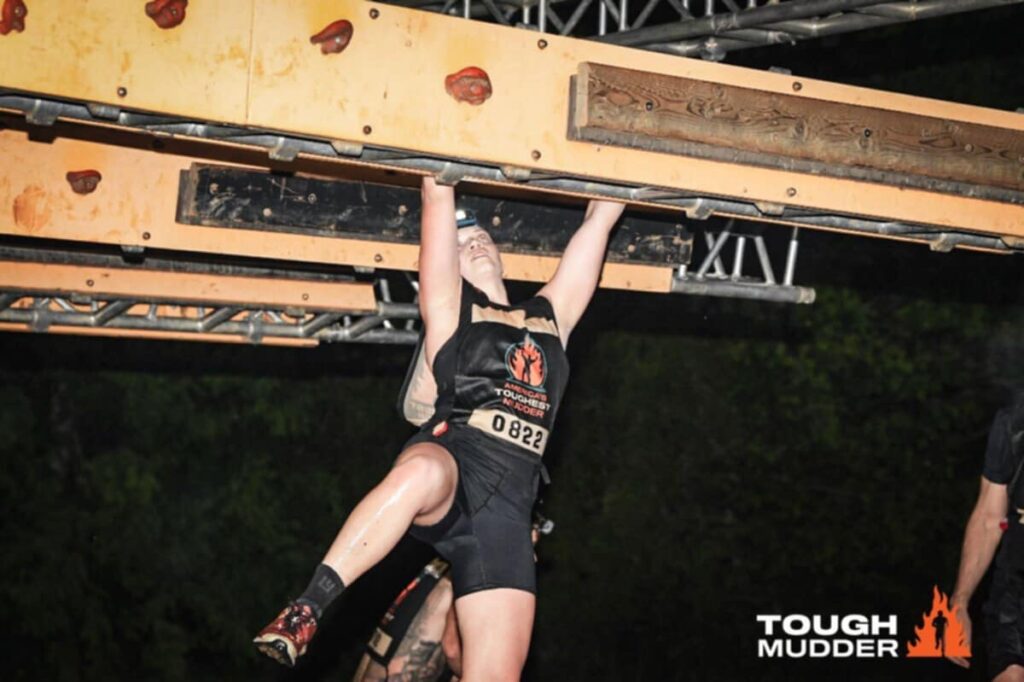
I didn’t overhaul my training for Toughest Mudder, but I made a few smart tweaks. I swapped out road runs for trail runs and started running at night — no music, just the sound of my own breath and footsteps. It helped sharpen my focus and mental toughness. I stuck to my Hybrid Engine training approach, which I’ve used for hybrid races like Hyrox and DEKA. It gave me the balance I needed.
My goals were clear: keep a steady, conversational pace, aim for 50 miles, and — most importantly — survive Cage Crawl (my ultimate nemesis). But I was also managing nerves. This would be my first ultra since breaking my foot, and 50 miles felt like a long shot. So I grounded myself with this mindset: Just do your best.
Heading into race day, I expected a packed crowd and buzzing energy. While the turnout wasn’t massive, the vibe was still electric. Every time I passed someone or they passed me, we shared encouraging words — small gestures that made a big difference. And despite prepping for a cold night, the weather turned out to be just right.
Race Day Moments
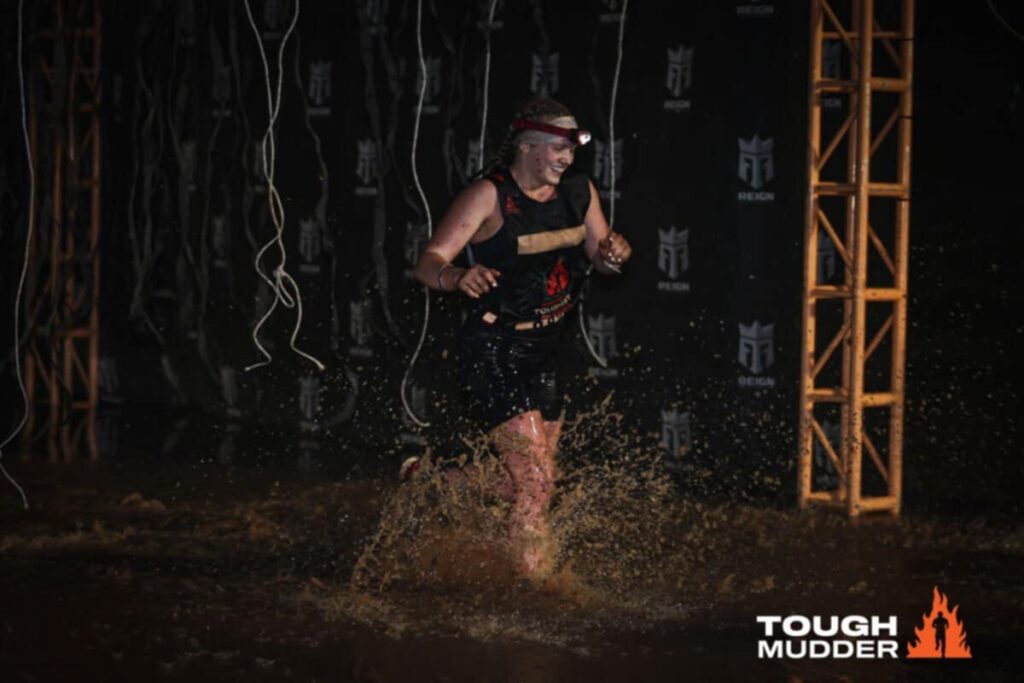
The most exhilarating moment came during my final loop. Around mile four, I realized I didn’t have as much time left as I thought. I picked up the pace, hitting obstacle after obstacle with urgency. A volunteer in a Gator followed behind me, clearing the path with a walkie-talkie. It felt surreal — like something out of a movie.
As for the toughest parts? Three obstacles pushed me to my limits:
- Cage Crawl: I’ve never liked confined spaces, especially underwater ones. But advice from Johnny Mares helped me stay calm. I took deep breaths, moved slowly, and focused on the end.
- Berlin Wall: Slippery, tall, and impossible to grip — I could barely reach the top with my fingertips. I relied on the kindness of strangers for a boost each time, and luckily, someone was always there.
- Block Ness Monster: Doing it alone was brutal. I had to figure out how to tilt the block just enough to swing myself over. It took effort, strategy, and sheer determination — but I got through it.
The Unexpected

A few surprises stood out to me:
- The volunteers — absolutely amazing. Their kindness and encouragement were a huge boost.
- The lake — I did not expect to be swimming during the race, but hey… that’s Tough Mudder!
- Teamwork moments — especially at Block Ness Monster, where a stranger waited and helped me through the entire obstacle. That simple act meant the world.
Toughest Mudder taught me this: Expect the unexpected and lead with kindness. Those two things will carry you through any race — and life.
To any women out there thinking about trying Tough Mudder or OCR: Go for it. Start with a regular Tough Mudder, get the feel for the obstacles, and then challenge yourself with a Toughest. Train without earbuds to build mental resilience. Practice eating and drinking what you’ll use on race day. And yes — do your hair in cute braids. When you feel good, you race better!
I don’t think women have a distinct advantage over men in OCR, but I do believe each of us brings something unique to the course. My training tips? Build your grip strength. Hit the trails — both in daylight and at night. And most importantly: run even when you don’t feel like it. That’s when the real growth happens.
To the women of OCR:
You are capable of more than you think. Strive to do your best — and then go a little further. The OCR community is already incredibly supportive, but I’d love to see more female athletes featured and celebrated. Here’s to more women breaking records, crushing goals, and rising through the ranks — especially the next generation of female racers.
— Charity Borne

